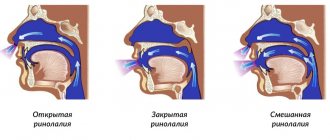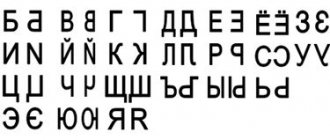Stuttering in children is a disorder of the tempo-rhythmic aspect of speech, caused by repeated convulsions in the articulatory, vocal or respiratory parts of the speech apparatus. Stuttering in children is characterized by “getting stuck” on individual sounds, their repeated, involuntary repetition, accompanying movements, and vegetative reactions. The term has several synonyms: logoneurosis, logoclonia, laloneurosis.
In children, one can often observe so-called physiological iterations, which manifest themselves in hesitations and children’s repetition of certain sounds and syllables. The reasons for this disorder may be insufficient development of the tempo-rhythmic side of oral speech, disruption of the functional activity of the auditory, speech and motor analyzers. If a child has a weak nervous system and there are other unfavorable factors, then physiological repetitions can become persistent and develop into stuttering.
There are more boys than girls among children who stutter. This is due to the structure of the hemispheres. The hemisphere in girls is organized in such a way that the left hemisphere works better than the right.
Basically, stuttering in children begins between 3-5 years of age - at this stage, speech develops in the most active way, but since the speech function may not be fully formed, various kinds of speech pathologies may arise.
Causes
We will list the most common causes of stuttering in children aged 3 to 5 years. This pathology can occur for a number of reasons, be congenital or acquired.
Congenital factors for the development of the defect include:
- Various types of pathologies during pregnancy and gestation (oxygen starvation, infectious processes, etc.).
- Problems during the birth period (injuries, early birth, etc.).
- Genetic predisposition along one of the lines of kinship.
- Individual personality characteristics, characteristics of the nervous system (predominance of excitability processes, hyperanxiety).
Acquired stuttering is provoked by:
- Shock trauma. Death of a parent or significant loved one. Chronic stress.
- Psychological trauma. Physical or psychological abuse. Bullying. Humiliation from peers or family.
- Physiological processes. Features of the development of the child’s cerebral hemispheres; this reason can be exclusively an age-related feature and resolve itself as the child grows up.
- Past illnesses. One of the causes of speech impairment can also be previous infectious diseases (meningitis, encephalopathy, etc.). Seasonal acute respiratory viral infections, influenza and other upper respiratory tract diseases. Speech may also be impaired due to various types of injuries, bruises, concussions due to falls or accidents. Diagnosed diabetes mellitus can also cause stuttering in children.
- False stuttering. This kind of stuttering can be inherited from one of your loved ones. In this case, the child may not have true pathologies. This type of stuttering is especially typical for young children who are at the age of learning speech through copying.
- Attempts to retrain a child to be left-handed. Attempts to forcefully teach a left-handed child to write with his right hand can cause severe disturbances in the child’s speech. Children who write with their left hand are quite sensitive and sensitive.
- An alarming situation at home. Contemplating conflict situations between family members can negatively affect the child’s nervous system, resulting in speech impairment in the form of stuttering.
- Authoritarian parenting. Violation of a child's personal boundaries, physical punishment and intimidation of a child often cause logoneurosis.
- Mental fatigue. Tasks beyond the child’s strength, without taking into account the child’s age capabilities, both physical and mental. The predominance of educational activities over gaming. An overabundance of section clubs, a lack of time and free space for the child’s self-organized activities.
- ·Disturbance of sleep patterns, lack of sleep.
Among the causes of stuttering there are a number of psychosomatic factors that cause stuttering:
- · Hysterical type: a sharp change in conditions in a social situation (for example, in the family everyone was allowed to do whatever he wanted, but when he went to kindergarten, the child was faced with prohibitions, restrictions and rules);
- Neurasthenic type: humiliation of the child’s personality and characteristics, lack of praise, comparison with other children;
- Psychasthenic type: parental overprotection, devaluation and lack of faith in the child that he can cope and succeed, can also lead to reluctance to speak and severe disturbances in the child’s speech.
Fighting stuttering at home
Most classes can be done at home. Some exercises, especially their first lessons, are carried out together with a specialist. Subsequent ones, when their mechanism is clear, you can do them on your own. The only exceptions are those that require special equipment, tools and other items. It is also an exception to have complex diagnoses that are caused by disorders in the nervous system or require the help of a psychotherapist.
Self-help techniques
Shows the positive effect of auto-training. Such exercises consist of practicing in front of a mirror to see your own facial expressions. They take about an hour and do not require much effort from the patient.
The main requirement is to maintain a calm, measured bottom pattern, have long, healthy sleep, give up bad habits, and not be stressed.
Symptoms of stuttering in children.
External manifestations of a speech defect may differ depending on the causes and severity of logoneurosis. But in almost all cases there are some common signs:
- Hesitations in speech and long pauses between words, syllables and letters.
- Speech spasms are clonic, tonic, mixed. The occurrence of clonic seizures is most often observed at the beginning of the formation of logoneurosis. Characterized by repetition of the first letters or syllables in words.
- Impaired breathing rate. The breathing patterns of children who stutter are always shallow and intermittent.
- Distortion in speech intonation. The presence of spasms and hesitations often lead to intonation disorders in the child’s speech.
- Monotonous, inexpressive, unemotional speech.
- Cramps and spasms during pronunciation most often occur at the beginning or middle of a word.
- Prolonged pauses between sounds in the middle of a word, prolongation of the sound.
- Nervous tics when pronouncing.
- Sleep disturbances, nocturnal enuresis, disturbances in appetite and digestion.
Associated symptoms of stuttering include:
- increased anxiety;
- obsessive anxiety;
- motor and speech tics;
- spasticity of the facial muscles.
The presence of all these manifestations causes avoidant behavior in the child - he tries to avoid situations where it is necessary to speak out.
Diagnostic methods and symptoms
Diagnosis of the disease is carried out by speech therapists, neurologists and psychologists. During the examination, doctors pay attention to the following symptoms:
- Speech breathing defects. This is an increased air flow during inhalation and exhalation, a prolonged inhalation and a shortened exhalation.
- Lowering your voice. Pronunciation of a sound may be accompanied by convulsive closure of the glottis; There are problems with the pronunciation of vowel sounds. When the voice is lowered to a whisper, as well as when singing, it is easier for a person to speak.
- Organic defects of the articulatory apparatus. These may be a high arch of the palate, a deviated nasal septum, uncontrolled deviations of the protruding tongue to the left or right from the midline.
- Presence of accompanying movements. Often, if there is a problem with the formation of sounds, a person makes movements that seem to help him. This could be throwing your head back, clenching your fists, or stepping your feet.
For a more detailed diagnosis, instrumental research methods – electroencephalography and echoencephalography – must be used.
Stuttering correction
The goal of correction for stuttering is to develop a new stereotype of speech production. Comprehensive treatment of stuttering leads to the best results in eliminating this speech defect.
Below we have described the most effective and common methods of treating and correcting stuttering in children.
Massage
Massage is a must for stuttering. Massage is an additional way to correct and treat stuttering. Massage is needed to improve blood circulation in the brain structures that are responsible for the motor reactions of the speech apparatus.
There are several effective massage techniques for stuttering:
Traditional massage
This type of massage is used for certain areas of the body, it is performed by an experienced massage therapist, using certain techniques and techniques depending on the goals and objectives of the massage. This type of massage helps to relax the muscles of the speech apparatus and the muscles adjacent to it. In a person who stutters, hypertonicity of the muscles of the neck and upper shoulder girdle can often be observed. Having achieved relaxation of these zones, the root of the tongue is relaxed and, accordingly, the tone of the muscles of the lower jaw decreases.
A relaxing massage of the head, cervical region, collar area, back, chest and shoulders has a positive effect on articulation.
Probe massage
Probe massage technique is performed using special probes. The massage has a rather harsh effect, therefore it is used in the complex treatment of stuttering in children over 4 years old. Contraindications to the probe massage technique is a tendency to epilepsy and seizures!
Acupressure
Massage relieves excessive excitability and anxiety, helps relax the speech center. Parents can do this type of massage on their own, since the manipulations in this type of massage are very simple. Having mastered the technique of acupressure, you can influence muscles that are in hypertonicity and, by acting on certain segments, achieve relaxation of the tongue and jaw muscles.
Segmental massage
This massage is aimed at directly influencing the muscle responsible for speech. The effectiveness of this type of massage is possible when performed systematically.
Breathing exercises . Breathing exercises are useful for the treatment of any type of stuttering, as well as its prevention at an early age in children. Breathing exercises are a set of special exercises for relaxing and toning the muscles of the speech apparatus. With the help of simple tasks, the child learns to breathe correctly, masters the rhythm and pace of inhalations and exhalations.
Classes with a speech therapist-defectologist
Classes with a speech therapist are an integral part of eliminating stuttering in children. Classes with a speech therapist help:
- eliminating disturbances in the tempo and rhythm of speech;
- development of motor functions;
- development of coordination of words and rhythmic movement;
- formation of phonation (speech) breathing;
- development of fluency of speech in its various forms;
- development of intonation characteristics of speech.
Medicines
Drug treatment of stuttering is necessary for severe clinical symptoms and for stuttering of organic origin. Also, drug treatment is necessary for stuttering resulting from an underlying disease or a long course of stuttering. The purpose of prescribing medications for stuttering:
- Reducing the frequency of speech muscle spasms.
- Stimulation of the parts of the brain responsible for speech.
- Reducing spasticity of the muscles involved in speech activity.
- Normalization of emotional state.
How to treat logoneurosis
Logoneurosis in children should be treated by various specialists, primarily speech therapists and psychotherapists. The latter is the main guarantee of effective therapy. Along with it, speech training, development of self-control, and improvement of intellectual capabilities should be carried out. Specialists use various approaches - the use of medications, physiotherapy, exercise therapy and others. Along with appropriate psychotherapy, this will maximize the elimination of these speech defects.
Treating logoneurosis in adults and children is a complex process that requires a lot of effort and time. In the case of a child, you will have to reconsider your relationships within the family, eliminate all conflicts between parents, and create a favorable atmosphere. A child should not suffer from his speech defect, otherwise he may develop an inferiority complex and other mental disorders.
Clinical therapy
Logoneurosis in adults can be treated using sedatives that have a calming effect on the nervous system. As an addition, you can include drugs that improve the overall functioning of the brain and its blood circulation. It is important to remember that such drugs should be prescribed exclusively by specialists.
Principles of psychotherapy
If logoneurosis or stuttering is based on psychological trauma, it is necessary to accurately establish its cause. To determine organic lesions in the brain, it is necessary to perform an MRI or CT scan. The treatment itself can be divided into two types - correction of neurological or psychological manifestations. Any logoneurosis is a multicomponent disorder that also requires a comprehensive solution. Each patient requires a special approach, developed exclusively for him. This applies to both children and adults.
A psychotherapist must work to eliminate psychological problems. A specialist conducts individual sessions to find the most optimal solution. Sometimes hypnosis, auto-training, and other techniques are used. These techniques are aimed at restoring the patient’s self-confidence and eliminating complexes associated with stuttering. As practice shows, for the treatment of stuttering in adults, hypnosis shows good effectiveness. After the sessions, the patient receives a recording of his own speech so that he can make sure that stuttering is significantly reduced or completely eliminated.
Speech therapy classes
Sessions with a speech therapist can help you get rid of logoneurosis. These techniques are designed to eliminate speech defects, provide clear and intelligible sound pronunciation, and make the patient’s speech fluent.
Primary therapy is carried out together with a speech therapist. Later, you can practice oral speech with your child on your own. The classes themselves can be individual or group. There are several methods for treating logoneurosis in children that have proven effective:
- Method of Vygodskaya, Uspenskaya and Pellinger. This treatment lasts 2-3 months and consists of 36 sessions. The basis of the technique is the creation of situations that form independent speech in the child. The entire lesson is conducted in a playful way, which makes it as comfortable and interesting as possible for him. In later classes, the specialist should help use detailed phrases.
- Smirnova's technique. Such classes are held every day, for about 20 minutes. The course lasts 30 weeks or one academic year. This program is designed to develop the rhythm and tempo of speech, improve fine motor skills, improve muscle tone, and also develop speech coordination.
- Silivestrov's technique. Treatment of logoneurosis in children lasts about 3-4 months and 32-36 lessons. This approach consists of three stages - preparatory, training, consolidation. At the first stage, a comfortable environment for the child is created, his verbal communication is narrowed. The second stage is a gradual transition from quiet to loud speech. At this stage, parents are also involved in the process. At the last, third stage, the child can independently construct a long conversation and read the text well and clearly.
- Shklovsky's technique. This course lasts about three months. The patient himself must be in a hospital setting. Psychiatrists, speech therapists, and neurologists work with him.
- Harutyunyan technique. The patient remains in the hospital for 24 days of therapy. Then 5 additional courses are conducted over one year.
Which method to choose in each specific case should be exclusively done by a specialist. Methods that are effective with children may not produce positive results with adults and vice versa.
Physiotherapy
Logoneurosis in children can be treated with complex therapy, which includes physical therapy. Exercise therapy for stuttering has some differences. It should affect all muscle groups and influence the stimulation and normalization of brain function. For adults, it is recommended to practice Nordic walking, skiing, and cycling. For exercise, you can use non-strength machines.
Such exercises are good for relieving nervous tension and affecting emotional stress. Logorhythmics exercises are good for young children. It is better to conduct classes outside and in the fresh air. Vitamin D, which is synthesized under the influence of sunlight, has a positive effect on the central nervous system.
Breathing exercises
Breathing exercises have the following effects on a child:
- coordination of rhythm and tempo of speech;
- learns to control his breathing, coordinate it with his speech;
- increase the tone of the abdominal wall;
- strengthen the diaphragm muscles;
- form breathing with the diaphragm.
Treatment of logoneurosis with breathing can take a very long time, sometimes even several years. For it to have the maximum effect, you need to perform the exercises correctly - you need to do them at least twice a day for 15 minutes.
Psychotherapy methods
These methods include two types of therapy - rational and suggestive. Additionally, the method of conducting auto-training is used. A rational method consists of a conversation with a specialist, who is called upon to form an adequate attitude of the patient to his problem. The suggestive method involves conducting one or several hypnosis sessions. Autotraining allows the patient to help himself independently. These skills are retained throughout life.
Gymnastics Strelnikova
This system consists of breathing exercises that were developed by this specialist. This approach has become widespread in medical science. It is aimed at eliminating diseases, including stuttering. It can be used for adults and children. Its main feature is its simplicity and proven effectiveness. The essence of the exercises is to alternate sharp breaths with simultaneous movements of individual parts of the body.
Competent help from a speech therapist
Any speech therapist is, first of all, a teacher who carries out correctional work in order to compensate for any speech disorders. Therapy should be carried out only after a systemic study of the existing physiological characteristics.
Recently, the treatment of logoneurosis in children and stuttering has changed markedly. This is due to the emergence of new methods, an increase in the number of specialists, and the emergence of new knowledge. Now you can look at getting rid of stuttering more optimistically and promisingly.
Prevention:
Stuttering can be prevented by creating a calm environment. Eliminating factors that can provoke stuttering attacks. Creating a favorable, calm environment. Lack of criticism regarding the child’s speech impediment.
General recommendations for the prevention of logoneurosis in children from 3 to 5 years old
- If a speech defect is detected in a child, you should protect him from anything that can cause emotional stress, including prolonged watching of TV.
- Play classical, relaxing music for your child - its healing effect has long been recognized even by official medicine. The music of Mozart, Beethoven, Grieg, and Chopin has a particularly beneficial effect on the children's psyche.
- You should not rely only on your own strength. Do not hesitate to contact specialists; the faster you can overcome a child’s stuttering, the easier it will be for him to communicate, learn, and explore the world.
- Classes with the child should be systematic. You can't take long breaks.
- Ensure your child sleeps at least 8 hours a day (daytime naps if necessary), and exclude active and computer games in the evening. Limit your time watching cartoons. Thus, the overstrain of the central parts of speech will be reduced.
- Organize proper communication. Talk to your baby calmly, slowly and smoothly, pronouncing all the words. When communicating with your child, try to use questions whose answers are simple and monosyllabic. If your child finds it difficult to pronounce a phrase on his own, say it together.
- Watch your diet. Vegetable and dairy foods should predominate in the diet. You should limit chocolate, sweets, spicy, salty and fried foods.
- Prevention of stuttering in neurologically and mentally healthy children is quite simple and consists of good family relationships. Where there are no conflicts, quarrels, and there is love and understanding, the child has much less risk of becoming a stutterer. Curing stuttering is much more difficult than preventing it. A child’s stuttering sometimes manifests itself so that parents understand their own mistakes.
- You cannot stop stuttering, you can only help, establish mutual understanding and cooperation with the child. And remember that love and faith in the baby’s abilities creates real miracles that even traditional medicine is not always able to explain. Believe in your child and he will succeed.
The role of the family’s response to logoneurosis in a child
A special role in the treatment of stuttering is given to the child’s family and environment. Higher risks exist if the child is constantly in an environment of stress, strong emotions, or if force or psychological pressure is applied to the child.
Parents should follow some recommendations from experts:
- maintain the correct daily routine of the child;
- do not overwork him;
- create a calm atmosphere in the family;
- use a calm metered tone when communicating with the child and each other, avoiding shouting or sudden movements;
- show interest in the child;
- TV or music should not be played all day;
- It is necessary to engage in development with the child.
Whatever methods and methods of treating logoneurosis are used, they may not have any result if these requirements are not met in the family.
How to behave correctly for mothers and fathers of children suffering from stuttering?
- Reduce any emotional stress on the child. Protect your baby from listening to loud music, aggressive games, and watching TV for long periods of time.
- Get your child used to listening to calm classical music
- Play with your baby, read good fairy tales to him, tell him about all the positive emotions you received.
- · Monitor your child's rest. Follow the regime. Be sure to take walks, go into nature, do gymnastics
- Throughout the treatment of the pathology, it is important to provide the child with a friendly environment. You should not criticize or scold your baby if he still has a defect. On the contrary, it is important to encourage even the fact that the child has started treatment, is interested in it, and is not afraid to attend a speech therapist and other related classes.
1.General information
Stuttering, or logoneurosis, is one of the most common and, at the same time, complex problems, which specialists of various profiles - from teachers to neurosurgeons - are forced to deal with.
According to various estimates, among children, stuttering occurs in 8-10% of the general population, although this speech disorder can occur not only in childhood, but also at any other age, regardless of gender, place of residence, race and nationality. However, there is still a reliable and close connection with gender: boys suffer about three times more often, and it is more difficult to treat logoneurosis in them.
The periods when the developing central nervous system and, in particular, its speech functions are most vulnerable to disorganizing influences cover the age intervals from 2 to 4 and from 5 to 7 years, when the child receives (and must process, assimilate, remember) a huge amount of new information for him.
A must read! Help with treatment and hospitalization!
Forecast
Stuttering in children usually goes away completely if treatment and recreational therapy is organized correctly. Sometimes relapses may occur during school and puberty.
Of course, overcoming stuttering depends on many conditions, primarily on its mechanisms, on the timing of the onset of complex influence and the completeness of its application, as well as on the age of the child. If stuttering develops due to congenital complications or acquired as a result of previous illnesses, the prognosis is less favorable. In most cases, the prognosis for stuttering is favorable and social adaptation of stutterers is achieved to a fairly high degree.
Where to go for treatment of logoneurosis?
Throughout the entire existence of the Ember center, our specialists have successfully relieved their clients (adults and children) from logoneurosis. Correction of logoneurosis should be carried out by competent specialists. Contact our center and our specialists will save you or your loved ones from logoneurosis forever. If necessary, classes can be held at home, in an environment that is comfortable and familiar to the client.
Make an initial appointment for the correction of logoneurosis by phone or fill out the application form on the website.
4.Treatment
Currently, there are many effective methods for treating stuttering. The primary task is to normalize the attitude towards the disorder and develop a constructive, cooperative position in the patient himself, as well as in his immediate family. It is equally important to examine and, if necessary, adjust the system of intrafamily relations. Various psychotherapeutic techniques of relaxation, distraction, coping (overcoming) fears and mental blocks, teaching autosuggestive techniques, and desensitization are used. Systems of special speech therapy gymnastics, massage, and breathing have been developed. Sometimes drug support is used (tranquilizers, antispasmodics, antidepressants), in other cases it is not indicated and is inappropriate.
If an organic pathology of the central nervous system is detected, a course of adequate neurological treatment or neurosurgical intervention is prescribed (as indicated).
Today, in most cases, it is possible to achieve a complete cure or at least a radical reduction of logoneurotic symptoms. It is very important to seek help at the initial stage, at the first signs of disturbances in rhythm and fluency of speech, when the disorder has not yet acquired the character of stagnant fixation with a lot of secondary psychological consequences.









